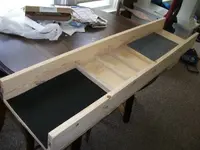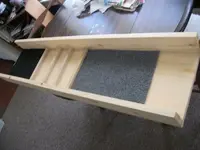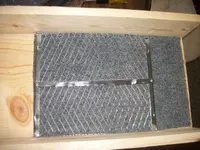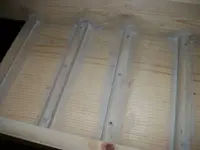- #1
Thread Owner
Here is a sluice I am working on. I dont know a lot about them and never used one , but I came up with plans based on what Ive seen on the internet. The sides are 1X4 , the bottom 1X11 , 48 inches long , and the riffles are hardwood square dowels roughly 1 inch. I am trying to think of a way to hold the carpet in so its removable. Thinking of painting it dark green or black and maybe coat it with polyurethane. Riffles are about 4 inches apart. I have the whole thing held together with liquid nails and screws.
This is my first attempt , so I could really use some advice in this. What would you change on it or do differently ?
This is my first attempt , so I could really use some advice in this. What would you change on it or do differently ?






